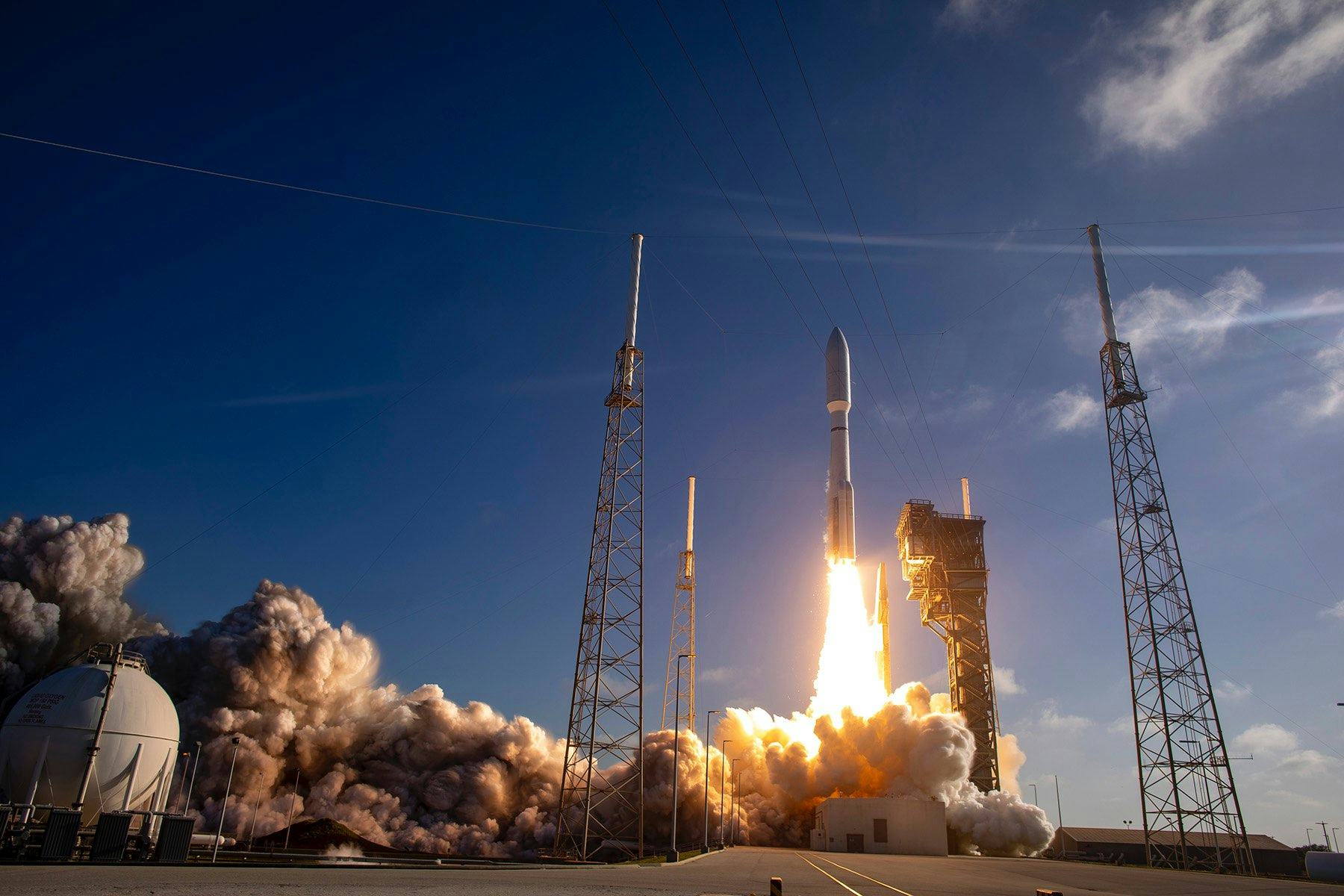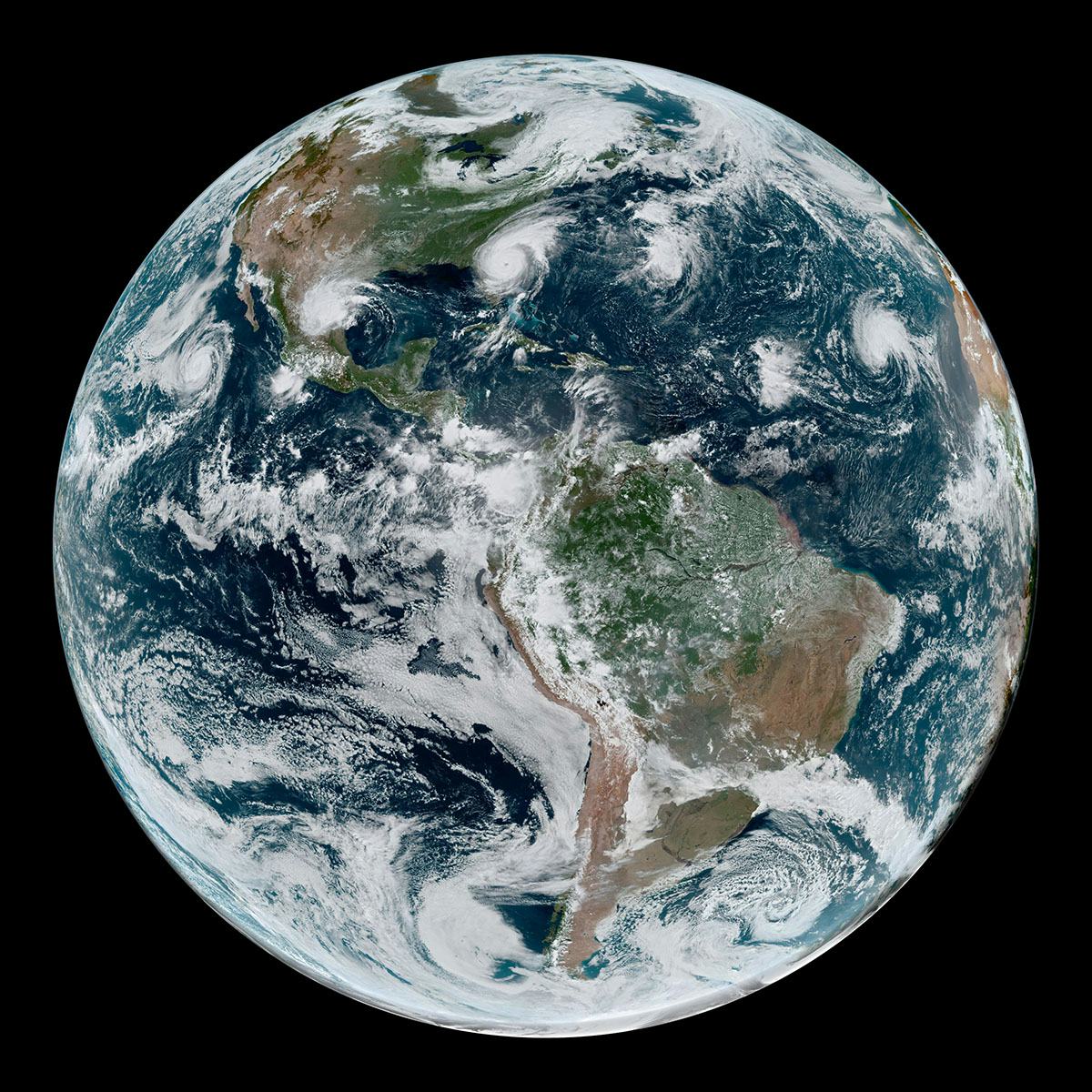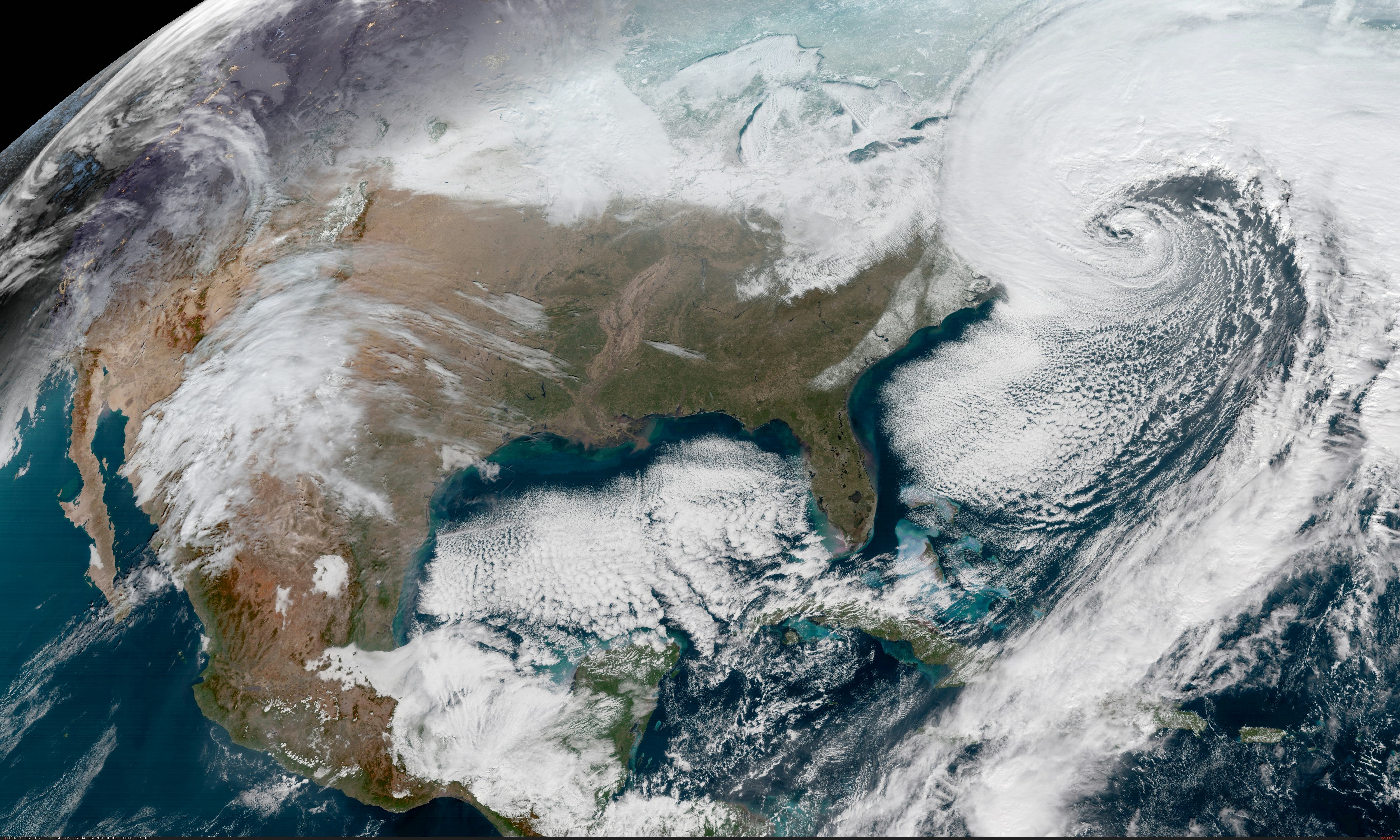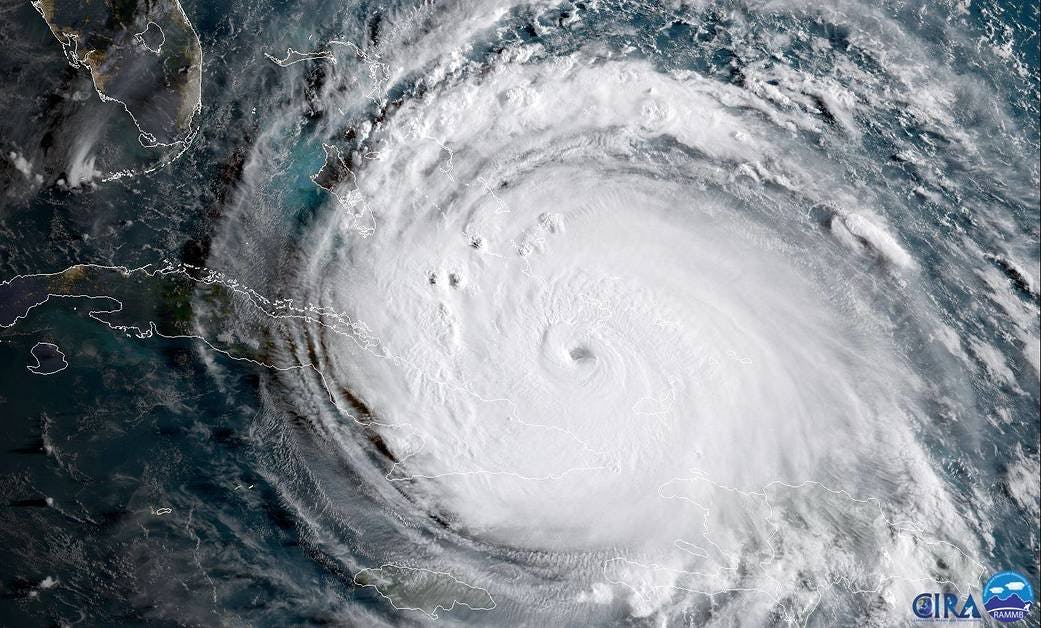
Do you remember turning 18? Maybe you went out to buy cigarettes and lottery tickets just because you legally could for the first time, depending on where you lived. Maybe you couldn’t wait to vote. We think of turning 18 as a rite of passage into adulthood, and why should that be any different for a fleet of powerful satellites?
On Tuesday at 4:38 p.m. EST, GOES-T launched from Cape Canaveral on an Atlas V rocket. When it settles into orbit 22,300 miles above Earth, it will become GOES-18, making it the eighteenth GOES satellite (and the first legally of-age one). Each pre-orbital satellite has been named by a letter in alphabetical order. Once it reaches its new home, it’s renamed with a number.
The Geostationary Operational Environmental Satellite Program (GOES) has been in operation since 1975 as a partnership between NASA and the National Oceanic and Atmospheric Administration (NOAA). The satellite fleet observes local weather conditions for meteorologists to use.

GOES-T is the third member of the current generation of these satellites, called the GOES-R series, which first launched in November 2016. This leg of GOES in its entirety, lasting from 2005 to 2036, costs $10.8 billion. The current series comprises GOES-R, S, T, and U, the latter set to become GOES-19 in April 2024, according to flight project manager Candace Carlisle at NASA.
“You turn on the weather on your TV, and you definitely see imagery that's coming from the GOES East and the GOES West,” Carlisle tells Inverse. GOES-16 is on the east, while 17 is on the west; 18 will join 17 over the Pacific Ocean. This placement is of note because, Carlisle says, weather systems tend to move from west to east, so GOES-T (soon-to-be GOES-18) will be key in tracking weather developments. The plan is for GOES-T to eventually become to new GOES-West around 2023, while GOES-17 moves over the central United States to serve as backup in case either East or West needs extra help.
GOES-T in many ways resembles its two predecessors. They share the same primary instruments, though its new magnetometer “will be providing more accurate space weather data, which would help enhance space predictions,” Carlisle says.

Its job is to show continuous imagery of weather events on Earth, from local weather like fog and thunderstorms to huge systems like tornadoes, hurricanes, and other severe weather. These spacecraft can also help keep an eye on dust storms, volcanic eruptions, and forest fires.
Weather satellites are instrumental in tracking them. “Over land, meteorologists rely heavily on ground-based radar for issuing things like severe thunderstorm warnings,” Dan Lindsey, a research meteorologist at NOAA, tells Inverse. “But over the ocean, we don't have radar and so we have satellite observations specifically to keep an eye on the storms as they form.”

As hurricanes become stronger and more frequent as one effect of climate change, this type of vision is necessary. Lindsey says satellite observations record cloud observations, from which clues about hurricanes and their strength emerge. While it’s true that there are more hurricanes on the East Coast (and GOES-T is destined for a spot over the Pacific), Lindsey says storm systems can roll in from the West, and also threaten Hawai’i.
GOES-T won’t just track Earth weather. It also has a suite of four space weather-detecting instruments that register events such as solar flares, which may interfere with satellite electronics, GPS, and radio communications. A solar maximum is coming up in 2025, so solar flares will be more plentiful as it approaches.
Happy 18th, GOES!
Editor’s note: This story was updated to reflect the fact that the satellite is operated by NOAA.







